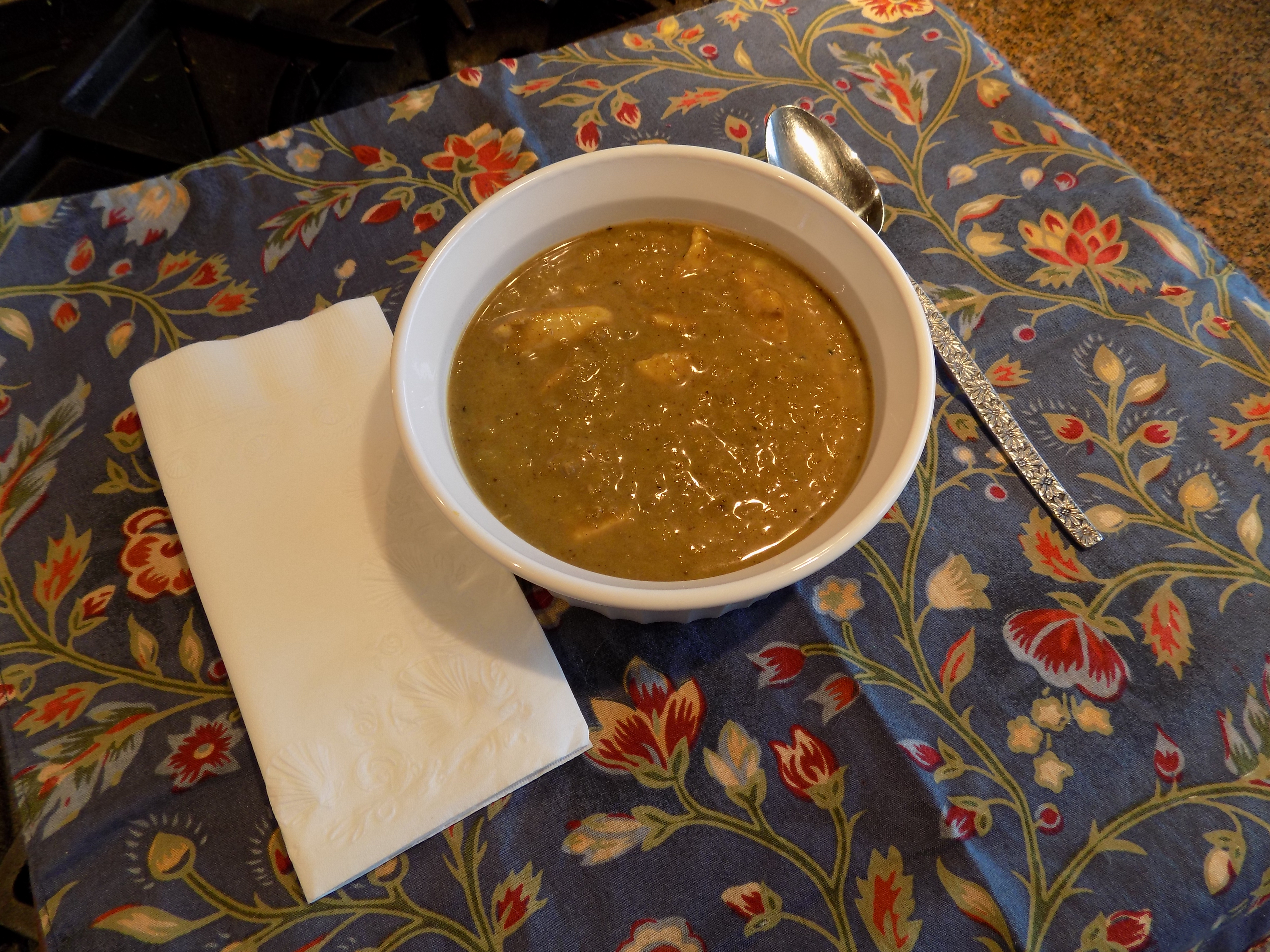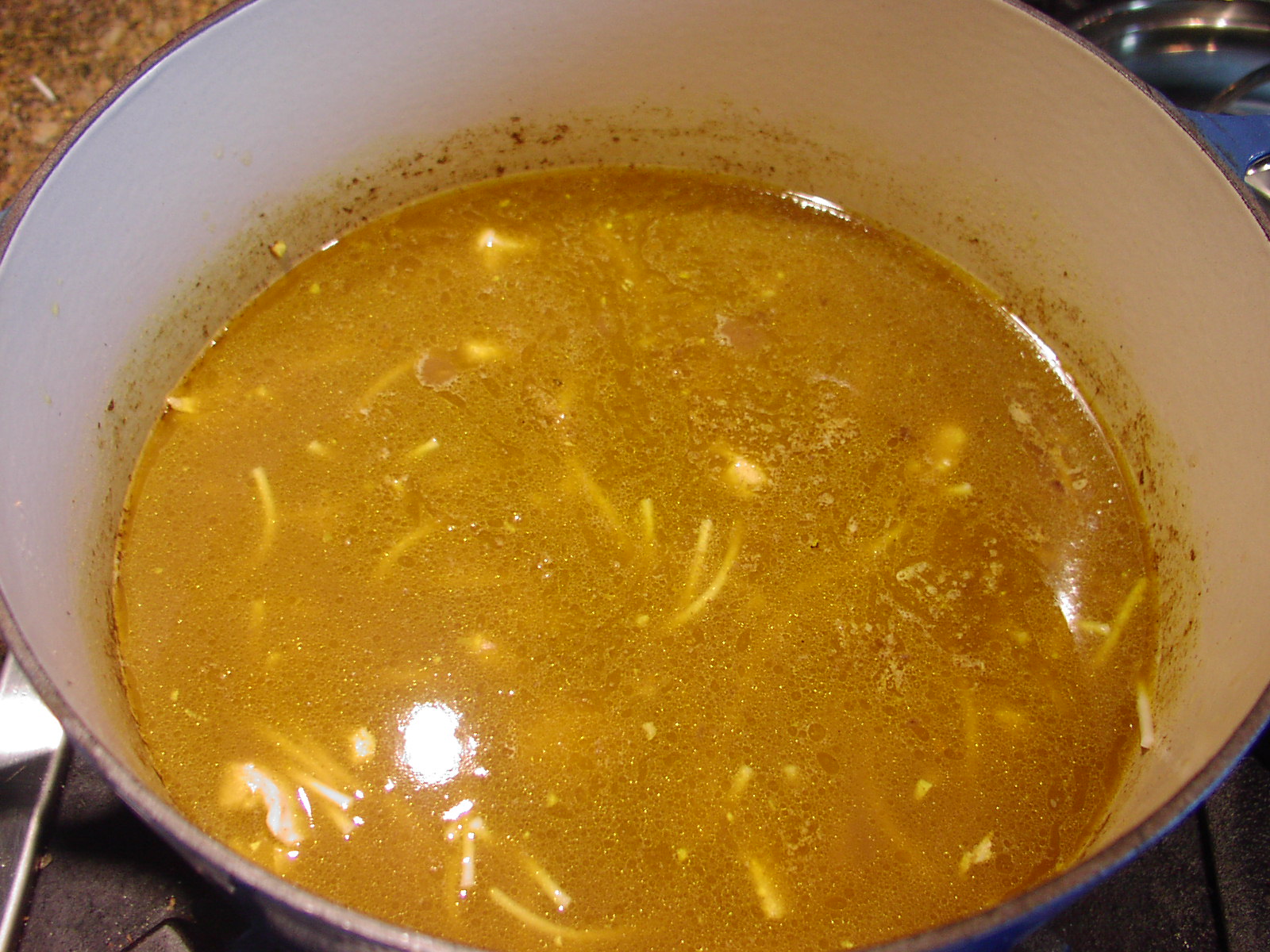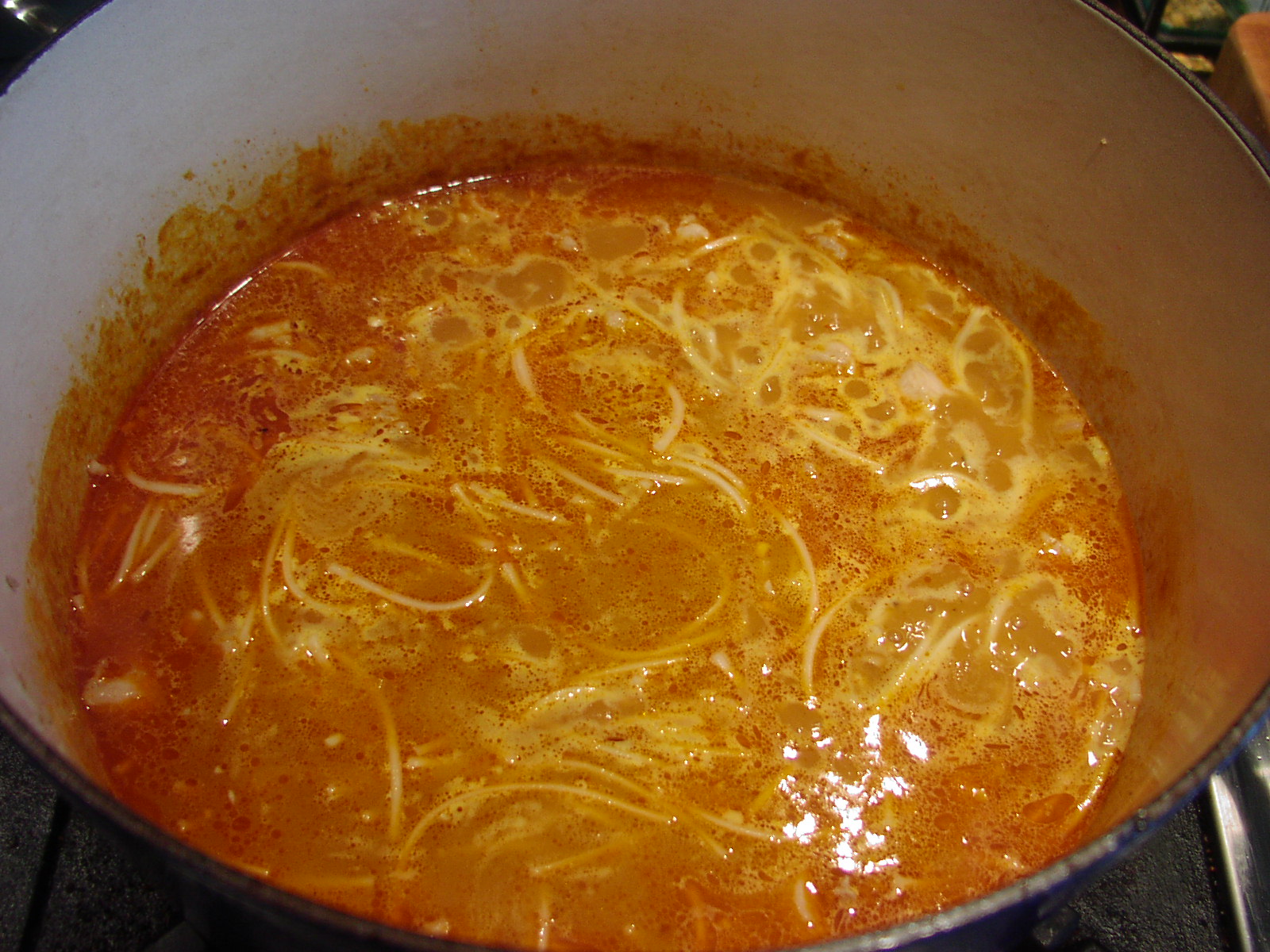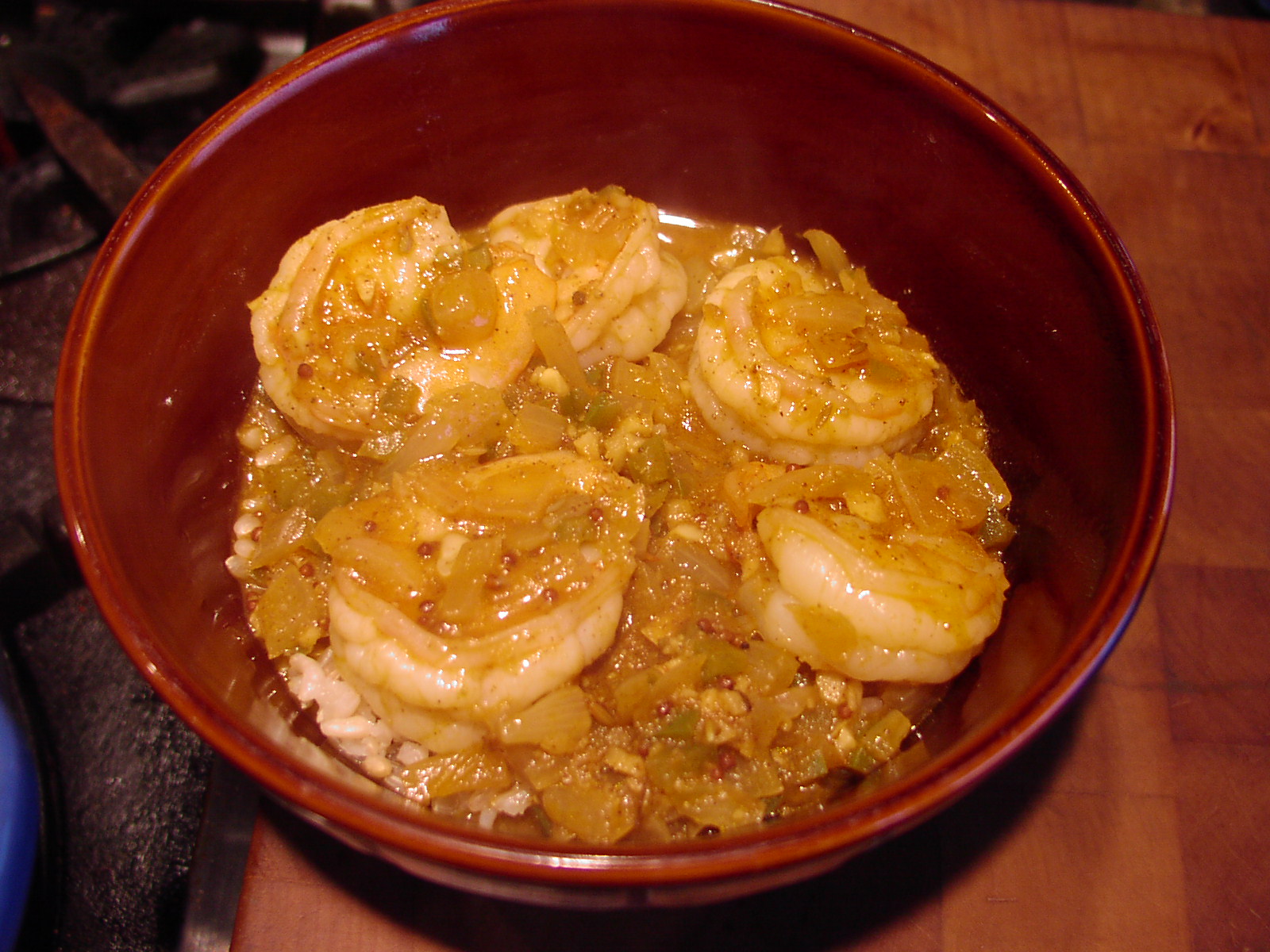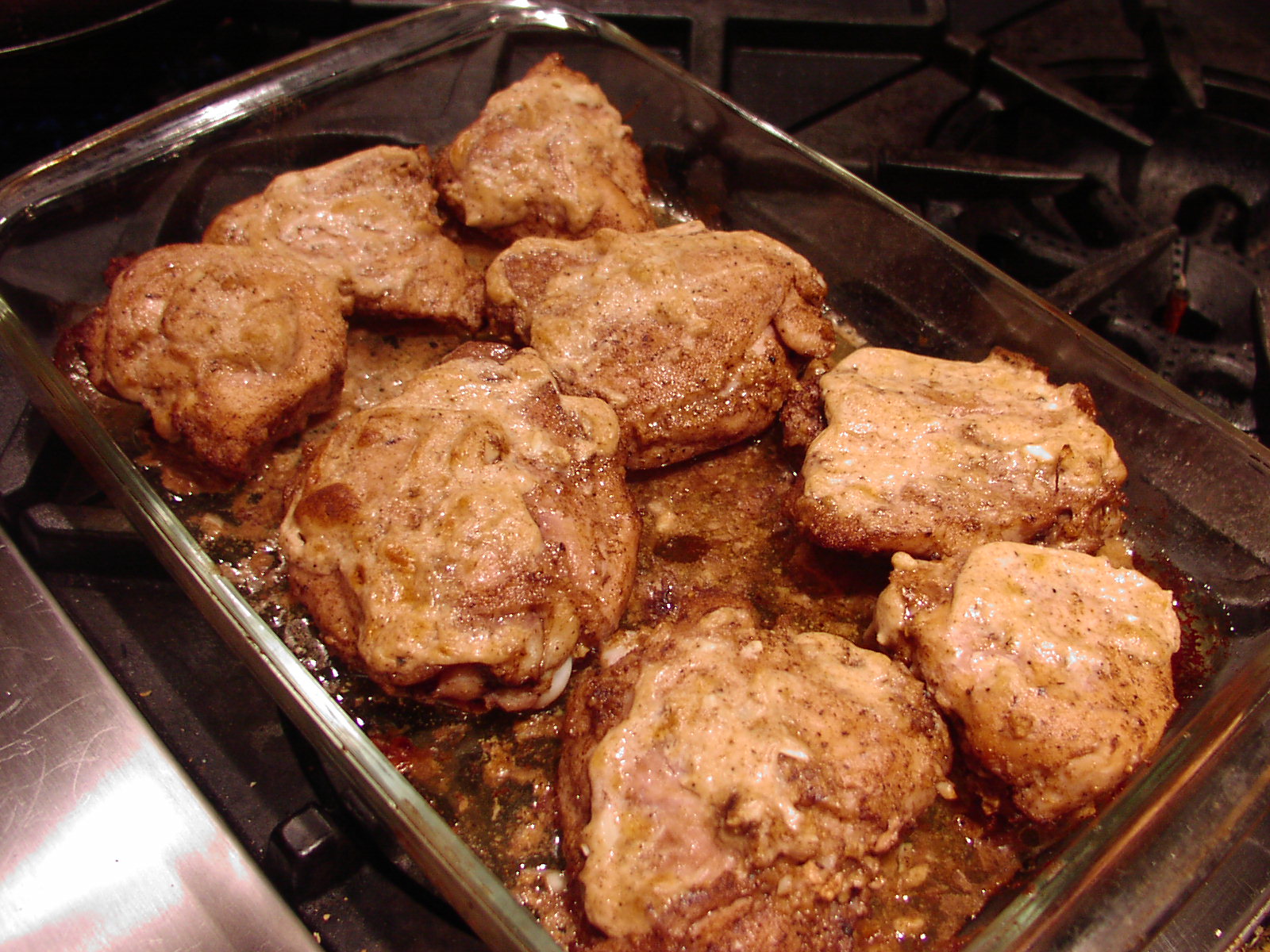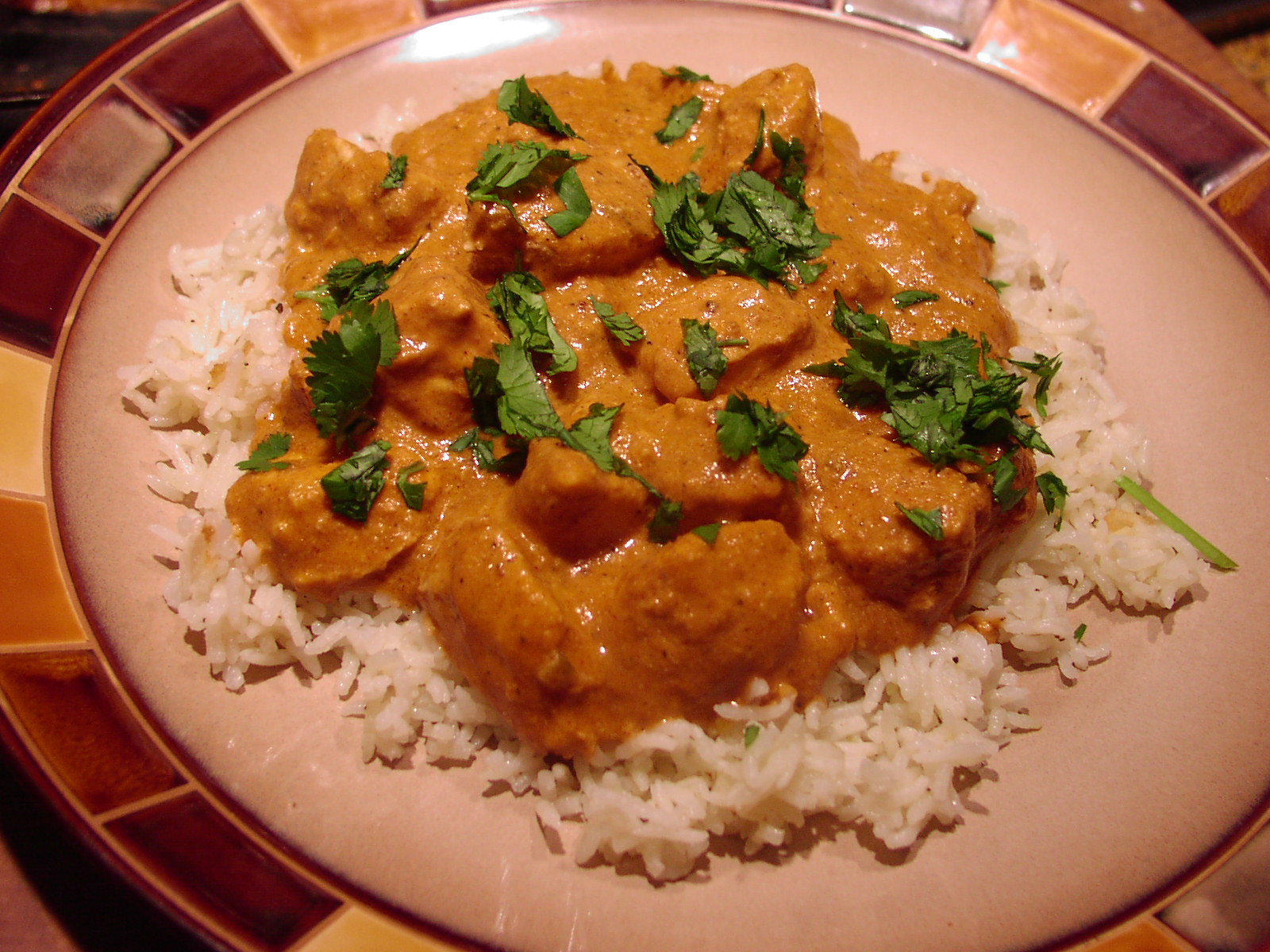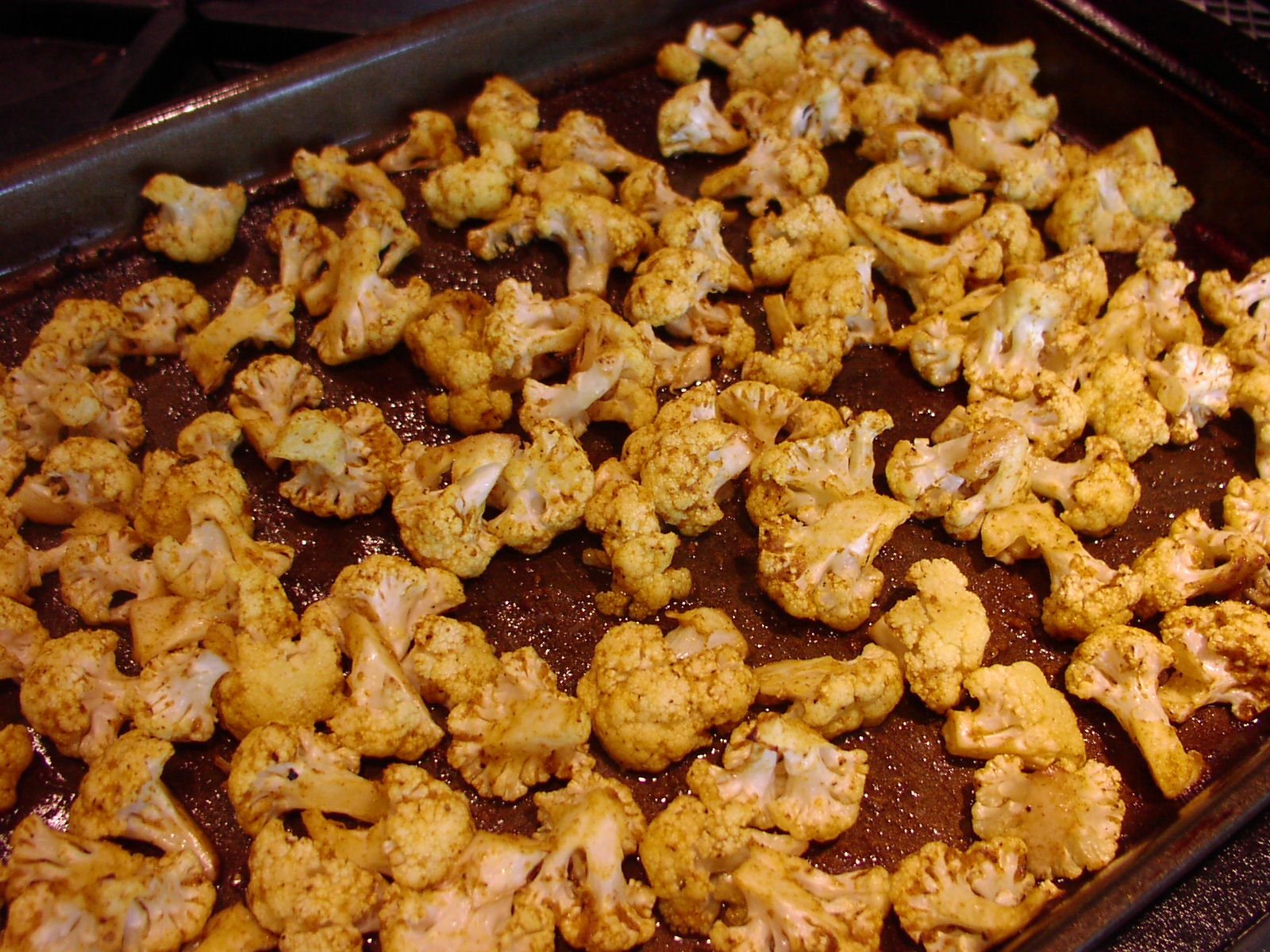
We love East Indian food. But until recently there hasn’t been a decent Indian restaurant anywhere near our home. And even though we now have an option, I don’t always like to go out to eat. Most of the time, I just like to fix what I’m hungry for in the privacy of my own kitchen. And of course, sometimes the dishes I prepare turn out pretty good and I share the recipes with you. Sometimes, well let’s just refer to them as colossal failures. Great idea, but not the results I expected and therefore quickly relegated to the never to be seen or heard of again. Or if I think the recipe might be redeemable, I’ll put the recipe in my “try again with changes” folder.
But luckily, this was not one of those recipes. Thank goodness. Because this dish was very easy to prepare. (I really like that!) And very tasty. And the whole house smelled like an Indian restaurant. (Who could ask for anything better than that?)
So, if you too love Indian food, give this simple recipe a try. Add a green veggie and dinner is on the table in no time.
As always, stay cool (both literally and figuratively), honor your kitchen by visiting it frequently, and never be discouraged if a recipe you try isn’t as amazing as you expected. Everyone’s tastes are different. So, if you try a dish and it isn’t completely to your liking, don’t make it again. Or try it again with modifications that you feel would improve the final result. Believe me, rarely does the printed recipe I start out with end up pristine. Especially if it’s a recipe I developed myself. Like this one. All the time I was preparing this dish last evening, I was making changes. Might be too much salt, so cut in half. Add chicken stock because the sauce is too thick. Add 2 teaspoons regular curry powder to increase the depth of flavor.
So, please do the same with any of my recipes. Don’t ever hesitate to make a recipe your own. You know what you like, so embrace “modify” as your official culinary mantra. It’s been mine for decades, and it has never steered me wrong.
Peace and love to all.
4 garlic cloves, finely minced, divided
½ c. + 1 c. chopped onion, divided
kosher salt
freshly ground black pepper
3 tsp. garam masala, divided (see recipe below)
1 lb. ground lamb
1 T. extra-virgin olive oil
2 tsp. minced fresh ginger
2 tsp. curry powder
1 (14.5 oz.) can diced tomatoes
⅓ c. water, or more if sauce is too thick
1 tsp. chicken base (like Better Than Bouillon chicken)
pinch cayenne pepper
½ c. plain Greek yogurt or sour cream
2 T. freshly chopped parsley, opt.
chopped peanuts, opt.
steamed basmati rice (see recipe below)
Combine half of the minced garlic, the ½ cup chopped onion, ¾ teaspoon kosher salt, a few grinds of black pepper, and 1 teaspoon of garam masala in a mixing bowl. Stir in the ground lamb. Form into balls whatever size you prefer. (I use an ice cream scoop to form the balls.)
Heat the olive oil in a large fry pan. Fry the meat balls until they are nicely browned. (They will finish cooking as they briefly simmer in the sauce.) But for now, remove from pan and set aside.
Add the remaining 1 cup chopped onion to the pan and sauté for 4-5 minutes, until softened. Add the other half of the minced garlic and the minced fresh ginger; sauté another 30 seconds.
Stir in the remaining 2 teaspoons garam masala, curry powder, diced tomatoes, and chicken broth. Season with salt, black pepper, and cayenne. Bring to a low simmer and cook for about 10 minutes, or until slightly thickened. Stir in the meatballs until warmed through, 1-2 more minutes. Adjust seasoning. Turn off the heat and stir in the Greek yogurt until just combined.
Serve hot over basmati rice (see recipe for perfect basmati rice below) garnished with parsley and chopped peanuts.
STEAMED BASMATI RICE
1 c. basmati rice
1½ c. water
Place rice and water in a medium size saucepan over medium high heat, no lid. Bring to a simmer, then cover, reduce heat to low, and cook for 12 minutes. DO NOT LIFT THE LID.
After 12 minutes, remove from heat, leave for 10 minutes with the lid on, then uncover, fluff with a fork, and serve immediately.
GARAM MASALA SPICE BLEND
1 T. ground cumin
1½ tsp. ground coriander
1½ tsp. ground cardamom
1½ tsp. ground black pepper
1 tsp. ground cinnamon
½ tsp. ground cloves
½ tsp. ground nutmeg
Combine all the ingredients and store in an airtight container in a cool, dry place.


